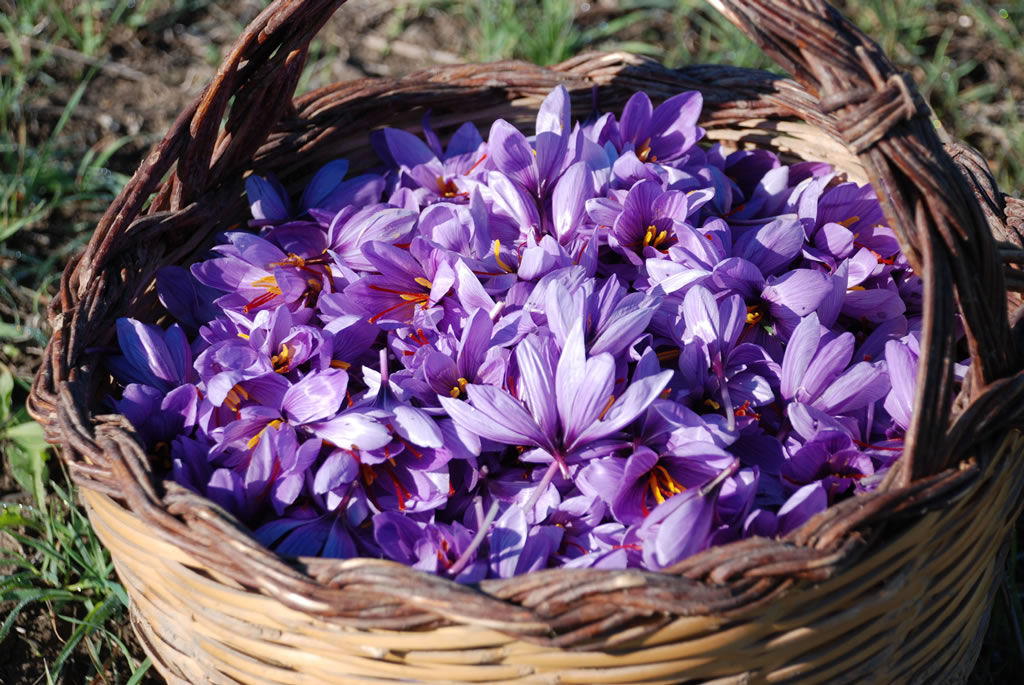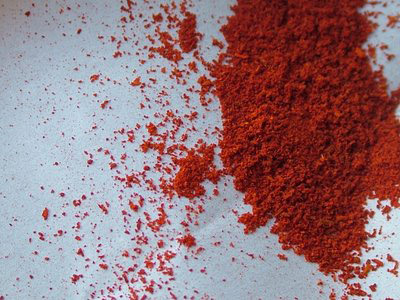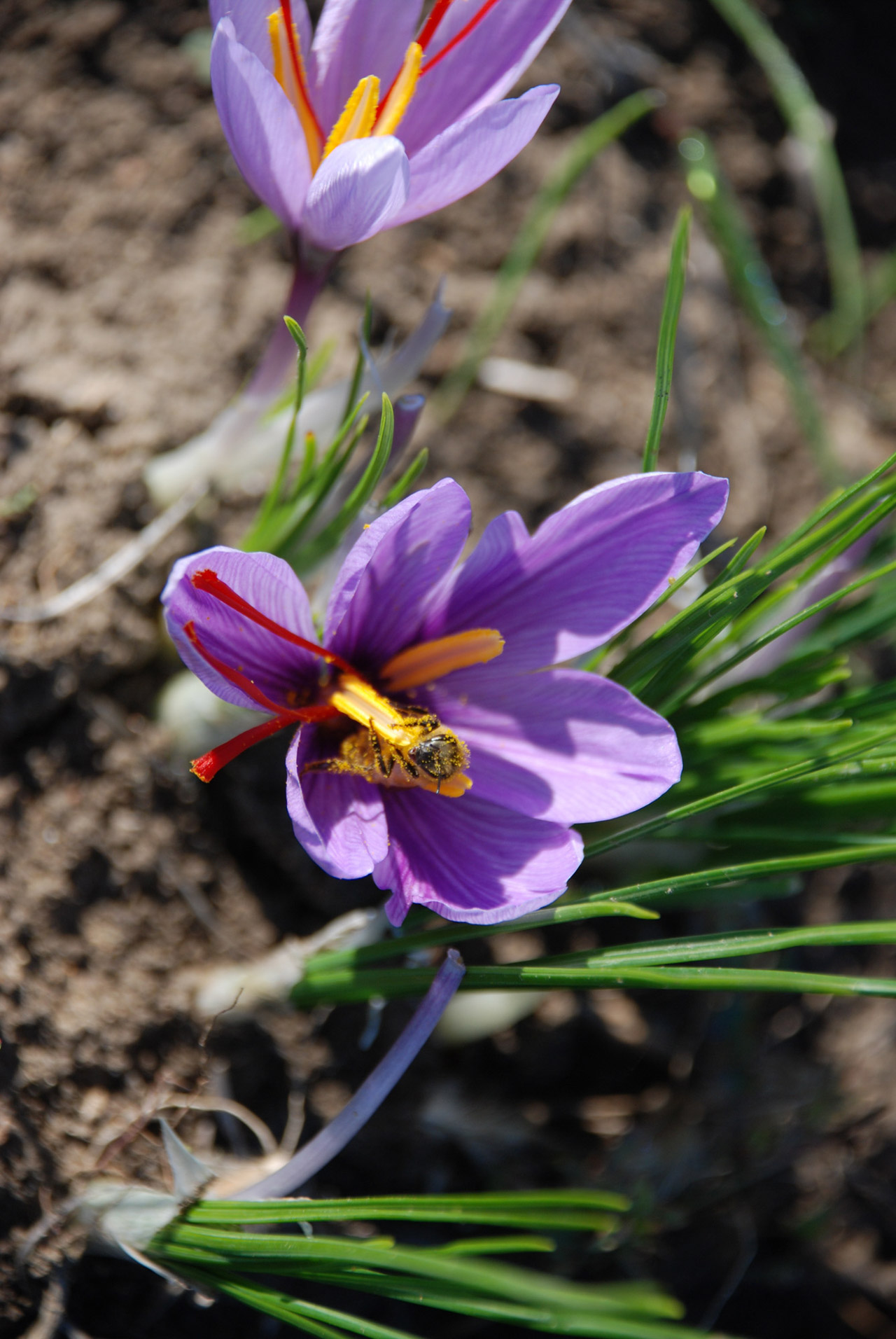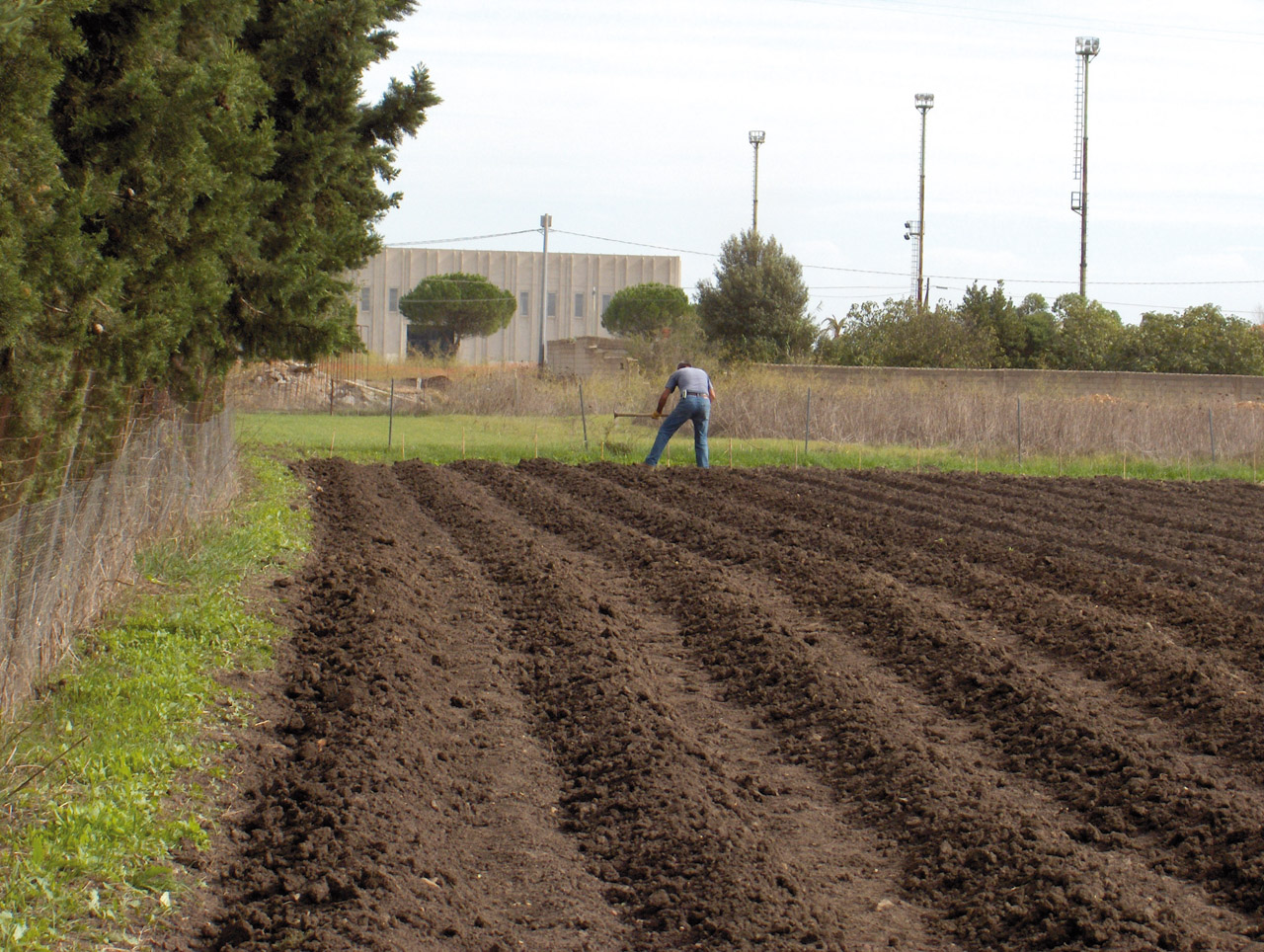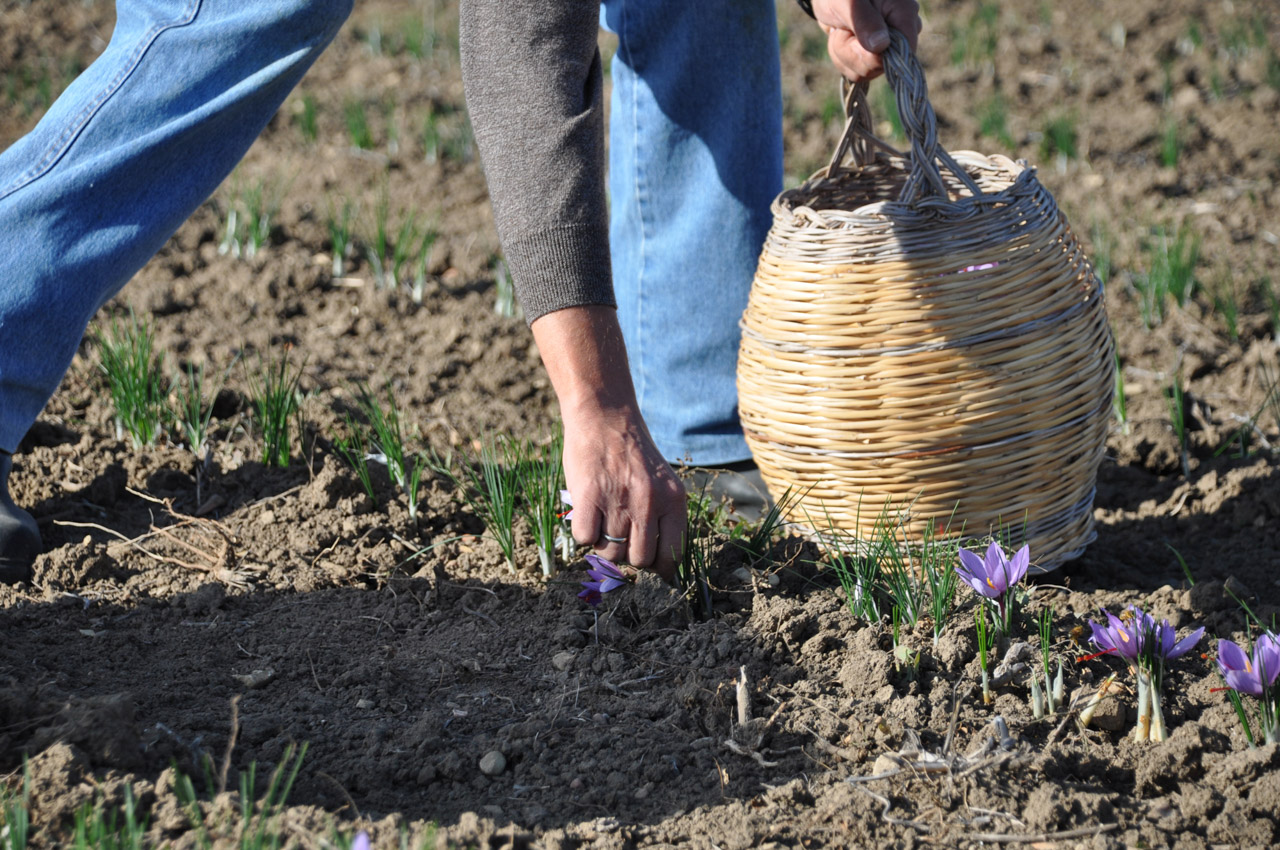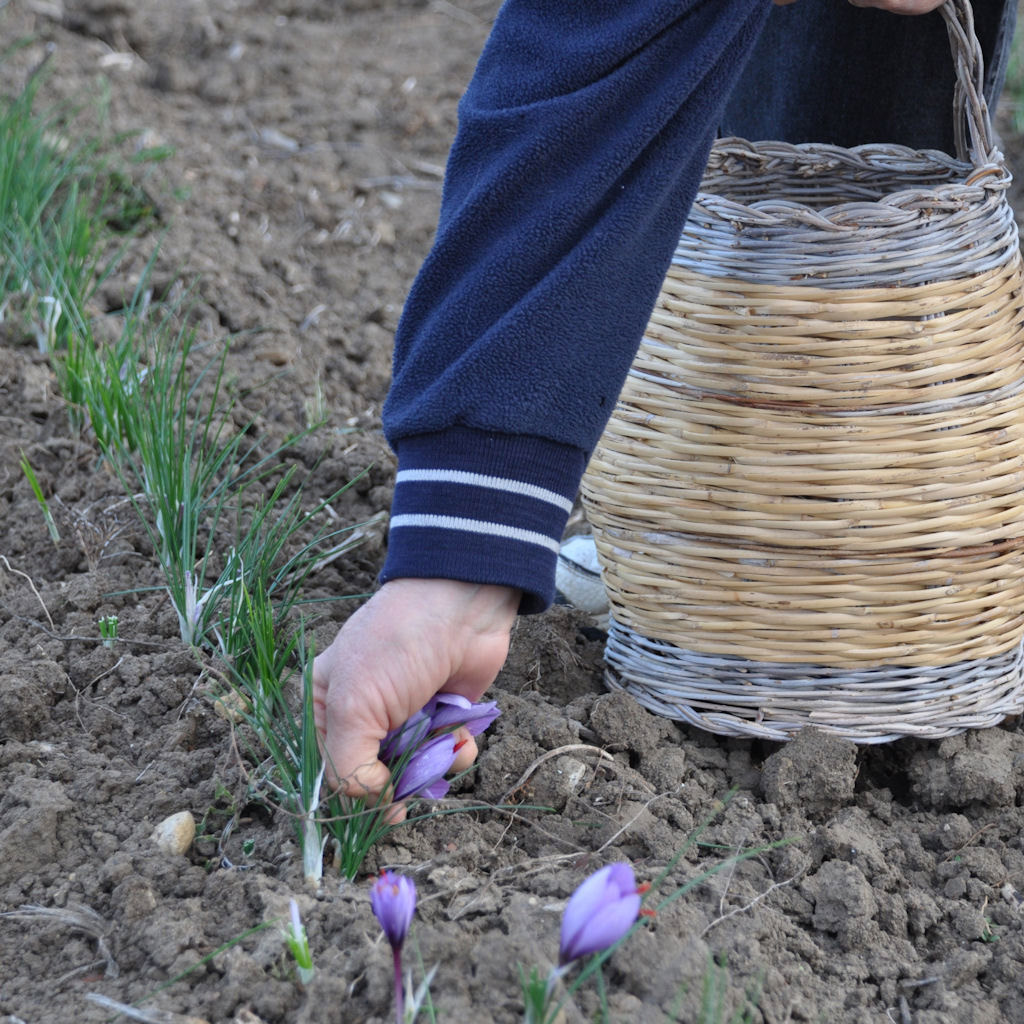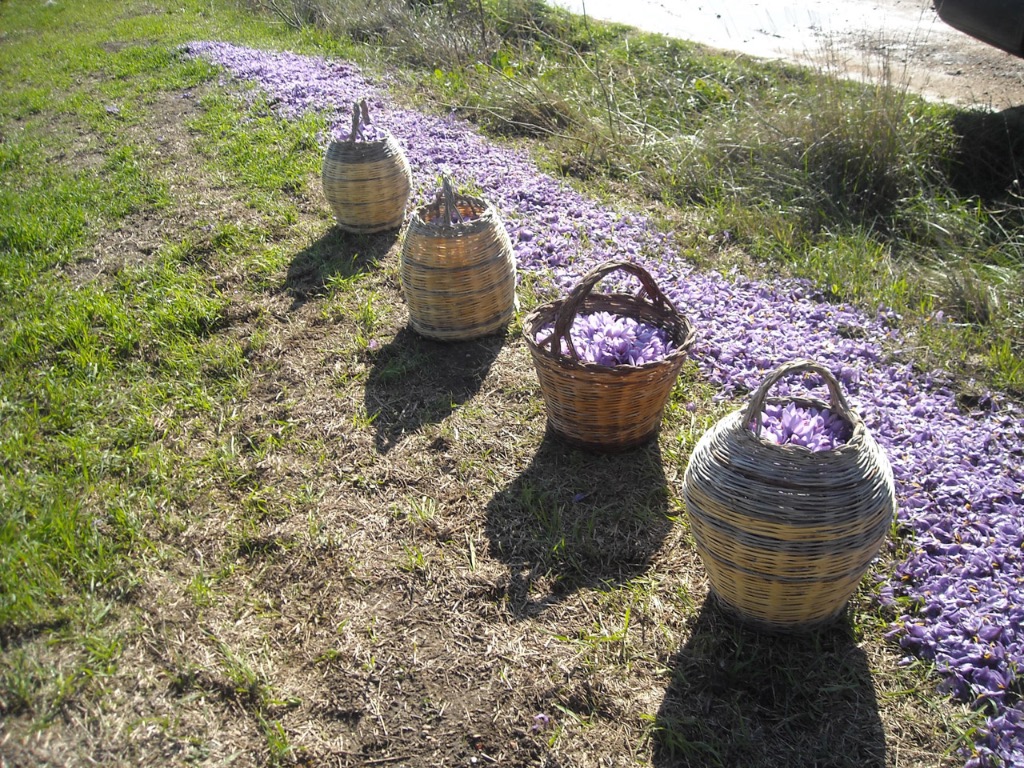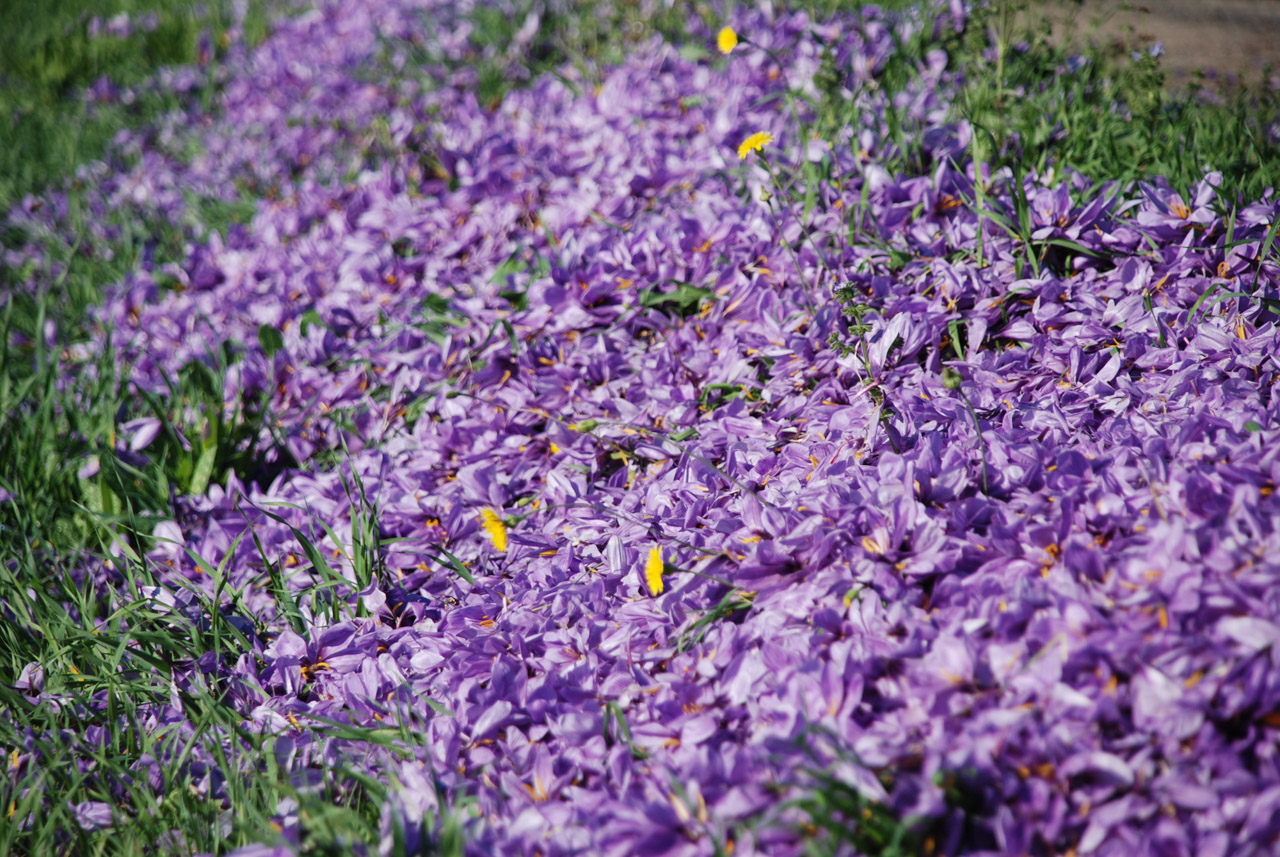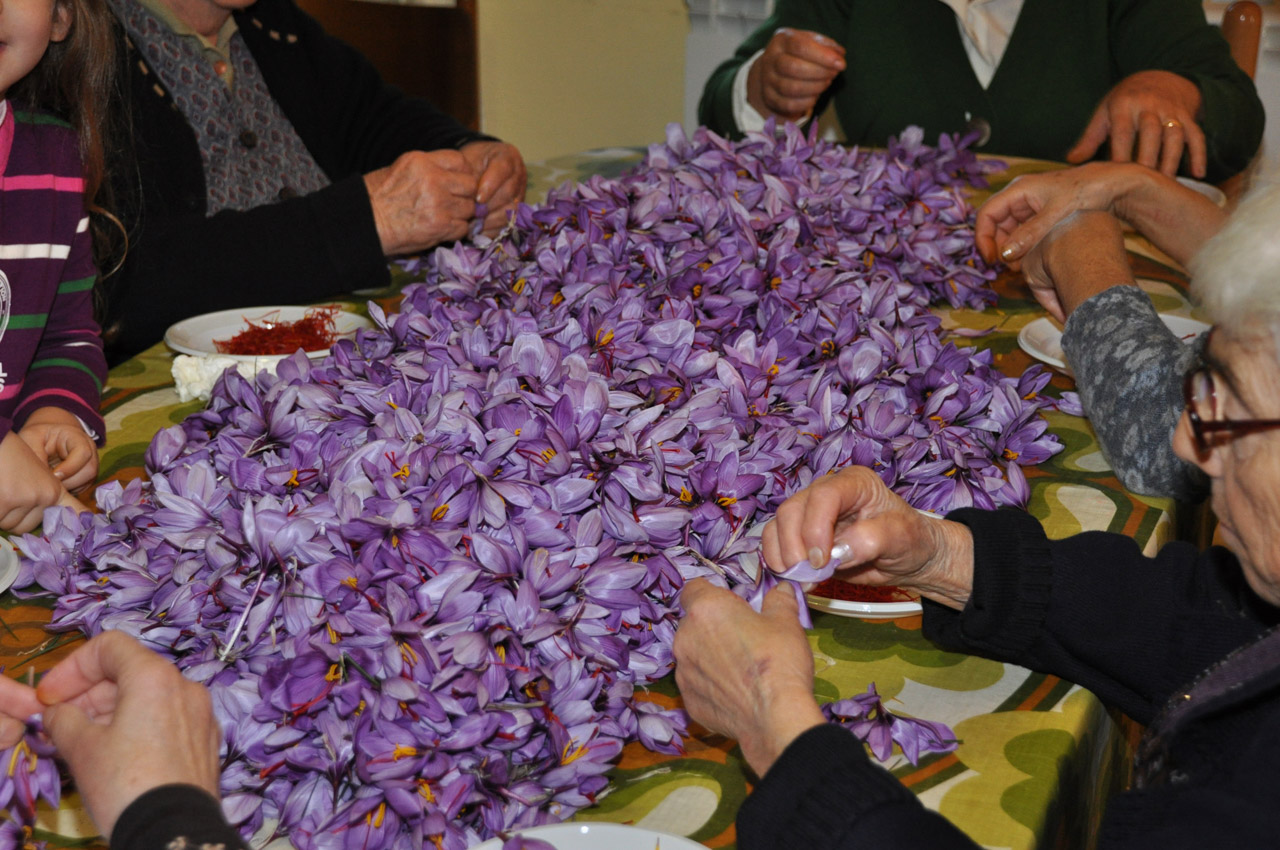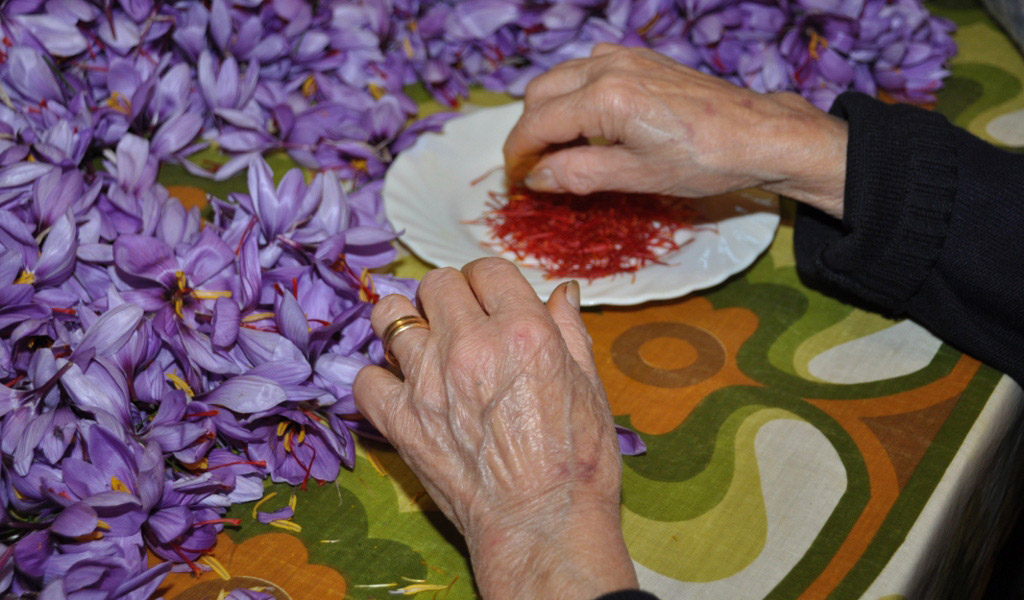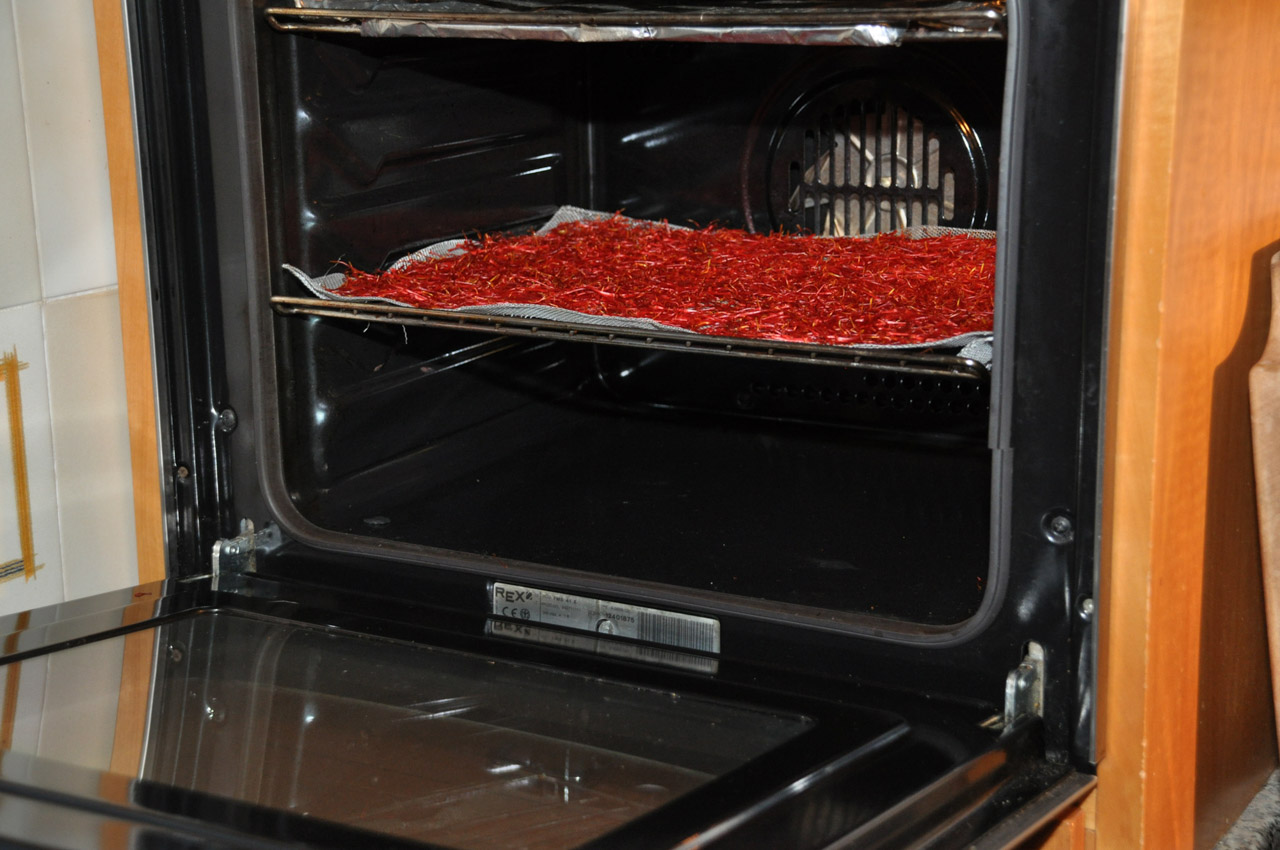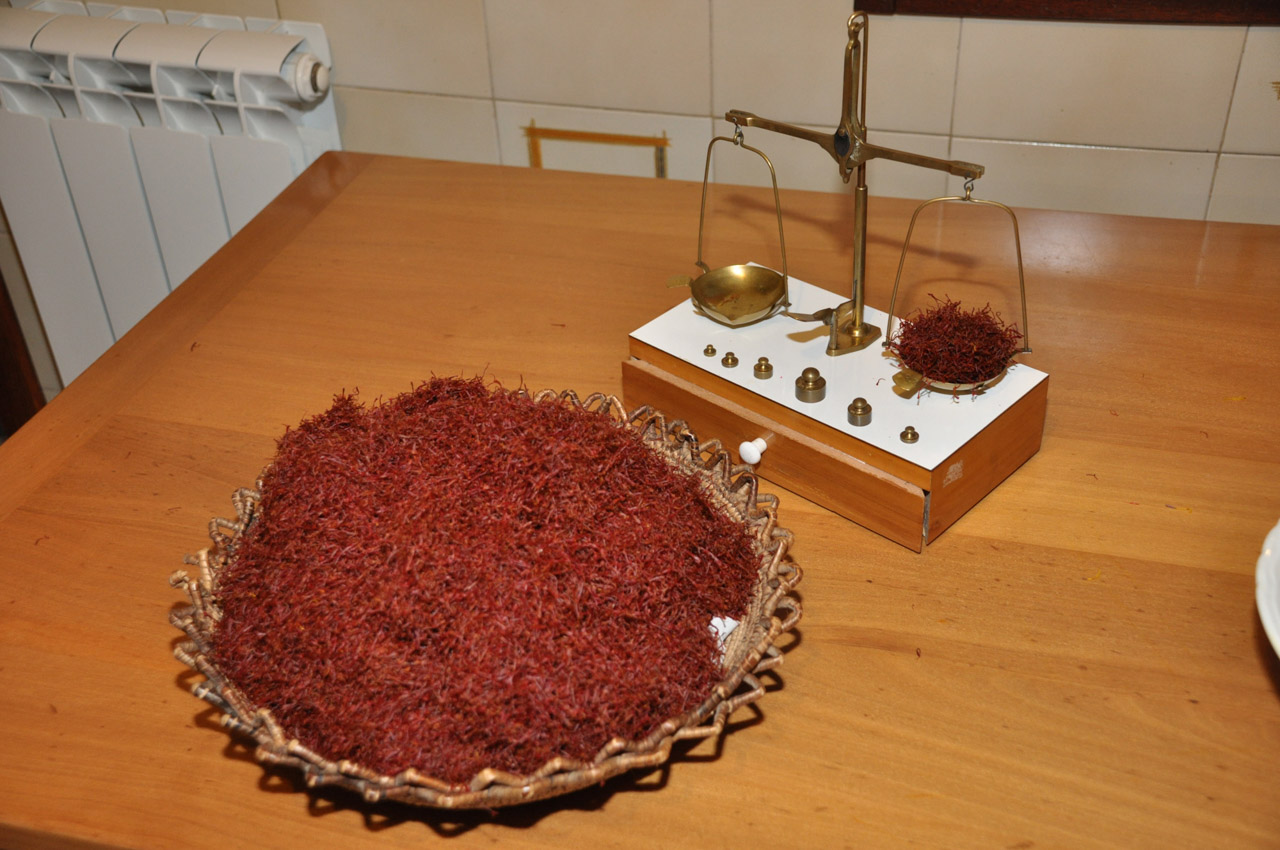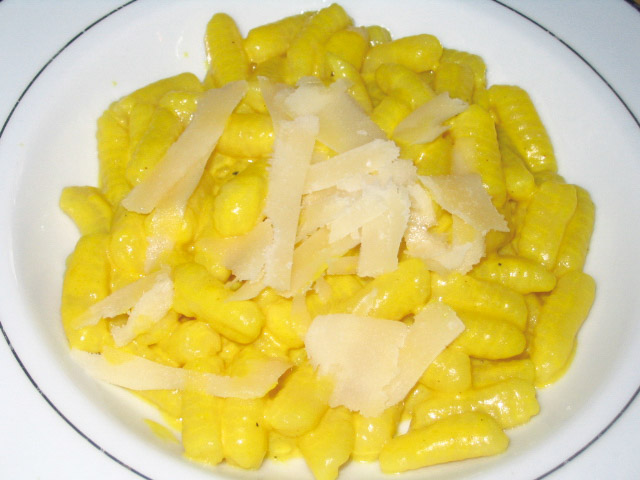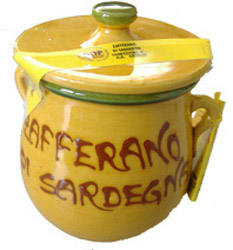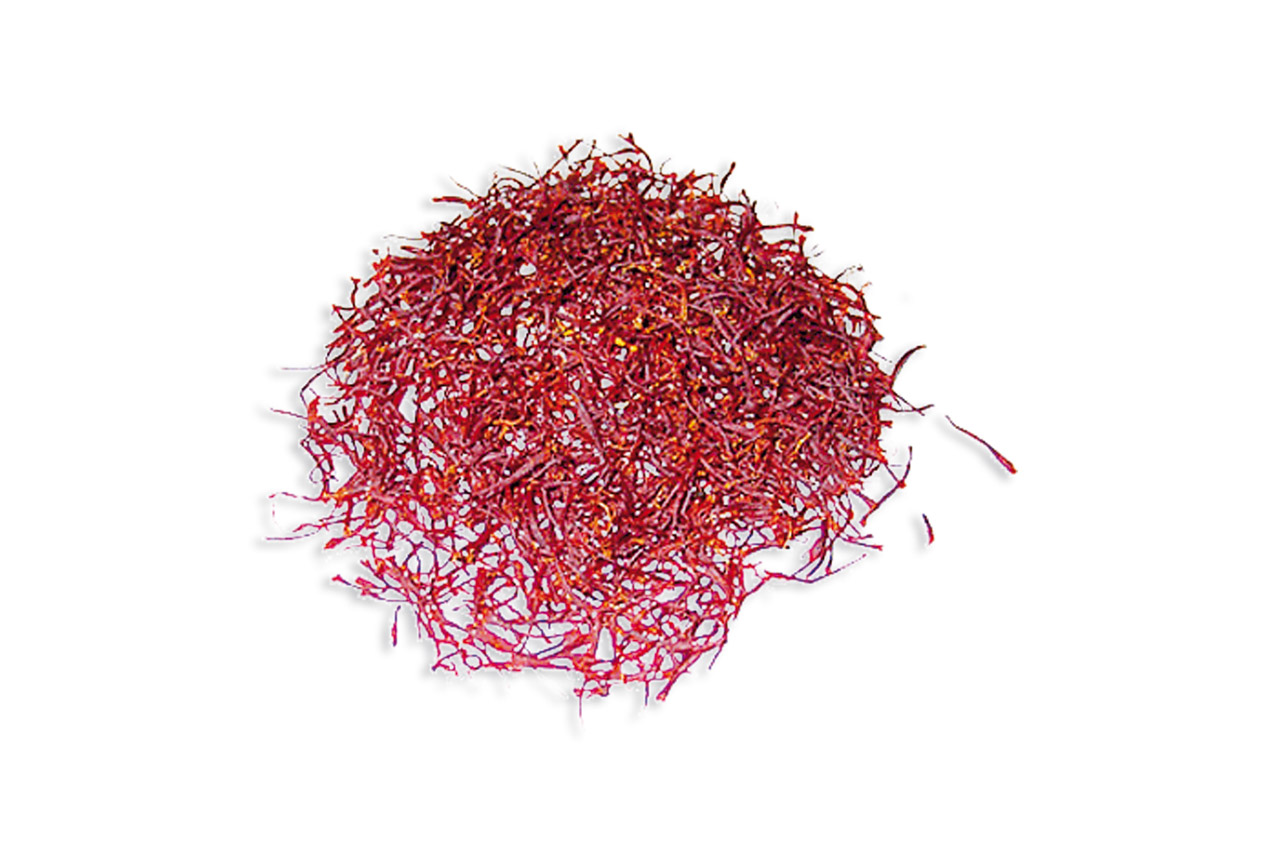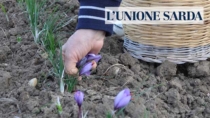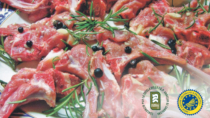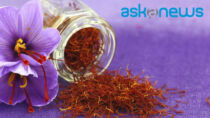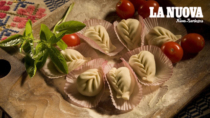Description
Zafferano di Sardegna PDO is saffron obtained from the stigmas of Crocus sativus L., a herbaceous plant belonging to the Iridaceae family; it is approximately 15 cm high and made up of a hypogeal apparatus (bulb–tuber), of leaves and flowers.
Production Area
The production area of Zafferano di Sardegna PDO is within the entire territory of the municipalities of San Gavino Monreale, Turri and Villanovafranca, in the Province of Sud Sardegna, in the Sardinia region.
Production Method
The soils of the production area are extremely fertile, of deep alluvial origin and with a light sand-clay consistency. Planting must take place between June 1st and October 15th and flowering begins on October 15th, continuing through to November 30th; each plant will flower for 15-20 days. In autumn (before or after flowering) and in spring, weeds are eliminated through manual hoeing. The flowers are harvested early in the morning when they are still closed or slightly open. The flowers are cut at the base of the peritoneum and then laid in layers in baskets and conserved in well-ventilated places. The crop lasts four years and the bulb-tuber cannot be replanted on the same ground before another four years have passed. All the processing stages of Zafferano di Sardegna PDO are carried out on the same day in which the flowers are picked. Once separated from the rest of the flower (peritoneum and stamens) the stigmas are moistened with extra virgin olive oil produced in Sardinia and dried in the sun or in special electric ovens.
Appearance and Flavour
Zafferano di Sardegna PDO is bright red in colour and has an intense flavour. The three main chemical components of Zafferano di Sardegna PDO are: crocin, which gives it its colour; picrocrocin, a bitter glycoside which attributes the flavour; safranal, which gives the fragrance.
History
The history of Zafferano di Sardegna PDO is strongly tied to the ancient saffron culture in Sardinia, which was introduced to the island by the Phoenicians. Cultivation was consolidated under the Punic rule and in the Roman and Byzantine periods, when saffron was used predominantly as a dye and for therapeutic and ornamental purposes. However, the first authentic evidence of saffron being traded is found in the 14th century, in the 1317 statutes of the port of Cagliari (the Breve Portus), which contain rules governing the export of stigmas from Sardinia. The cultivation and use of saffron spread further in the 19th century, when it was in demand not only for its aromatic and medicinal qualities, but also for dyeing silk and cotton. During the period of economic recovery after the Second World War, saffron remained important for many families as a means of supplementing their income, eventually becoming a symbol of the culture and tradition of the farming population.
Gastronomy
Before being packaged, Zafferano di Sardegna PDO is kept in glass, tin or stainless steel recipients, hermetically sealed against light and air. After opening, in order to keep the organoleptic qualities intact, it is best kept in hermetically sealed containers, in a dark, dry place. It is used in many Sardinian recipes: Fregua (a sort of cous-cous), Malloreddus (a traditional first course), ragout, soup or even in desserts.
Marketing
The product is marketed as Zafferano di Sardegna PDO, in stigmas or filaments. The packaging material must be glass, terracotta, cork or cardboard (with only glass or paper coming into direct contact with the saffron) and must be such as to avoid the product being damaged or altered during transport or storage. Packages come in the following weights: 0.25 g, 0.50 g, 1, 2 g and 5 g.
Distinctive Features
Zafferano di Sardegna PDO is characterized by its elevated colouring, therapeutic and aromatic properties.






